Three Must-Try Souvlaki in Piraeus
In Drapetsona and Keratsini, family-run kebab...
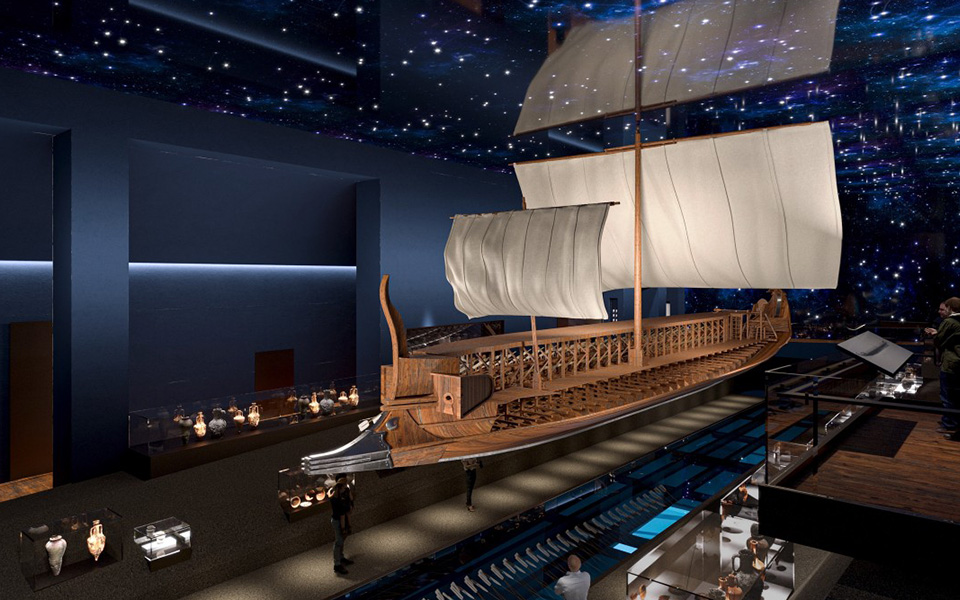
A photorealistic image of a 3D printed "floating" trireme. Oared warships such as the famous trireme ruled Greek seas from the 7th to 4th centuries BC.
© Hellenic Ministry of Culture
In the historic heart of Piraeus, where the shimmering Aegean Sea meets the pulse of Greece’s largest port, a groundbreaking cultural initiative is taking shape. The much-anticipated National Museum of Underwater Antiquities, slated to open in 2026, will transform the iconic SILO building – a towering grain warehouse built in 1936 – into a world-class museum celebrating Greece’s maritime legacy. Paired with a striking contemporary extension, the museum will immerse visitors in a journey beneath the waves, blending ancient artifacts with cutting-edge technology to bring history to life.
As Minister of Culture, Lina Mendoni is spearheading the initiative, describing it as “a vision that has been decades in the making.” Backed by €93 million from the European Union’s Recovery and Resilience Fund, it marks Greece’s most significant cultural investment in years. Beyond restoring an industrial landmark, the museum is set to position Piraeus as a premier cultural destination on the global stage.
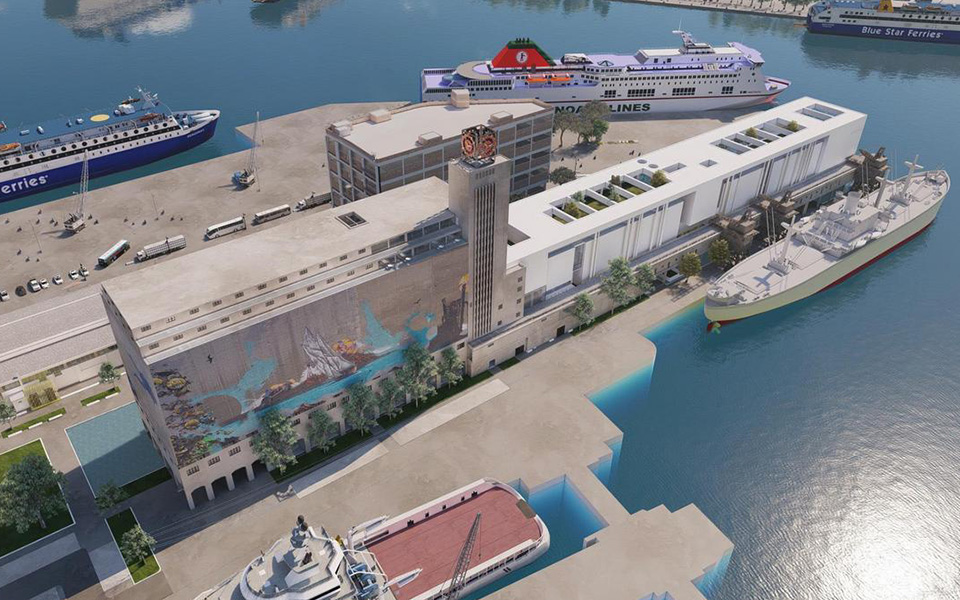
A photorealistic depiction of the National Museum of Underwater Antiquities.
© Hellenic Ministry of Culture
For millennia, the sea has been Greece’s lifeblood – its highways of trade, its stage for myth and conquest, and the foundation of its global influence. Yet, despite its profound maritime history, Greece has never had a dedicated national institution to showcase this heritage. While regional museums have made valuable contributions, they have barely skimmed the surface of the country’s deep and enduring relationship with the sea.
The National Museum of Underwater Antiquities seeks to bridge this gap, offering a singular venue that unites Greece’s seafaring past with its present. Culture Minister Mendoni underscored this connection, stating:
“Greece’s history, from prehistory to the present day, is intrinsically linked to the sea, shipping, and seafaring. This museum will allow visitors to dive into the past through exhibits featuring submerged settlements, shipwrecks, ship replicas, hulls, cargoes, maps, and diagrams.”
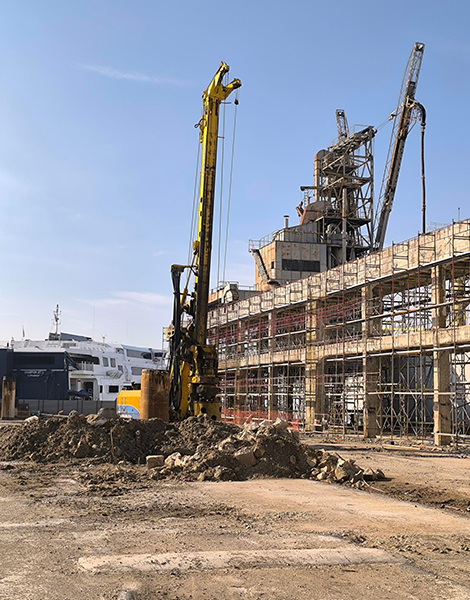
Part of the museum will be housed in the iconic SILO building, built between 1934 and 1936.
© Hellenic Ministry of Culture
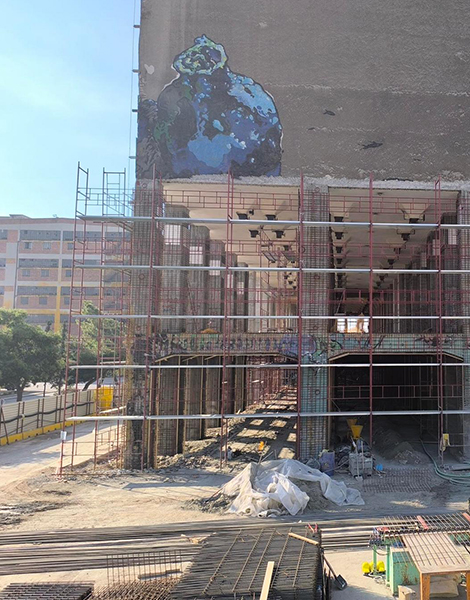
The new museum scheduled to open its doors to the public in 2026.
© Hellenic Ministry of Culture
At the heart of the museum’s transformation is the SILO building, an emblem of Greece’s mid-20th-century industrial growth. Its distinctive honeycomb structure is being carefully preserved, ensuring that its historic character endures even as it is repurposed for the future. A modern annex will seamlessly complement the original structure, creating a dynamic fusion of heritage and innovation.
Spanning an impressive 26,380 square meters, the museum will dedicate 7,550 square meters to exhibitions – both permanent and temporary. Beyond the galleries, visitors can explore a library, an auditorium, and interactive multimedia spaces. A café, gift shop, and medical facilities will enhance the experience, while state-of-the-art conservation laboratories will ensure the preservation of delicate artifacts recovered from the deep.
One of the museum’s most distinctive features is the restoration of the elevated conveyor belt that once transported grain to docked ships. Visitors will have the rare opportunity to walk along this historic structure, rising 8.85 meters above the ground for panoramic views of Piraeus and the Aegean – a striking tribute to Greece’s enduring ties to the sea.
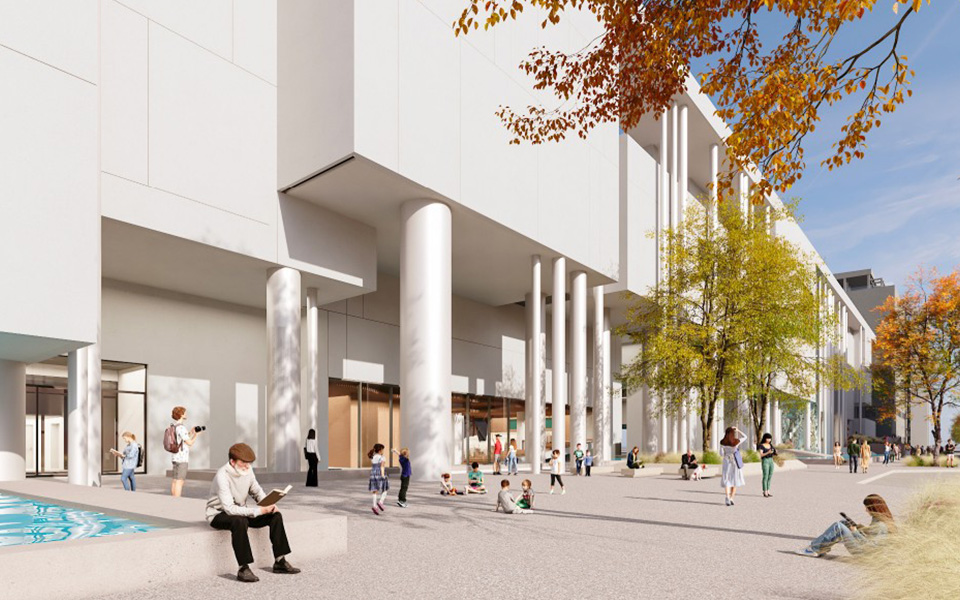
A photorealistic depiction of the exterior of the National Museum of Underwater Antiquities.
© Hellenic Ministry of Culture
At the core of the museum’s storytelling are six thematic sections, showcasing more than 2,500 exhibits that explore Greece’s maritime past from multiple perspectives.
Visitors will embark on a journey that begins with “The Sea, Environment, and Humanity,” a powerful exploration of how the marine world has shaped cultures, economies, and ecosystems over the millennia. This opening theme emphasizes the profound interdependence between humanity and the sea, inviting reflection on both the opportunities and challenges this relationship has posed through history.
The narrative then dives into the fascinating world of “Underwater Archaeology,” a field that has revolutionized our understanding of the past. This section delves into the tools, techniques, and discoveries that have unlocked secrets hidden beneath the waves, from shipwrecks laden with ancient cargo to the remnants of settlements, submerged by rising sea levels and tectonic shift. Through detailed displays and innovative digital reconstructions, visitors will gain insight into the painstaking efforts required to recover and interpret these underwater treasures.
The journey continues with “Time Capsules Beneath the Sea,” a theme that brings history vividly to life through an extraordinary collection of artifacts. From intricately crafted amphorae and trade goods to the remnants of ancient ship hulls, these objects offer an intimate glimpse into the lives of those who once fought at sea or navigated the Mediterranean’s bustling trade routes.
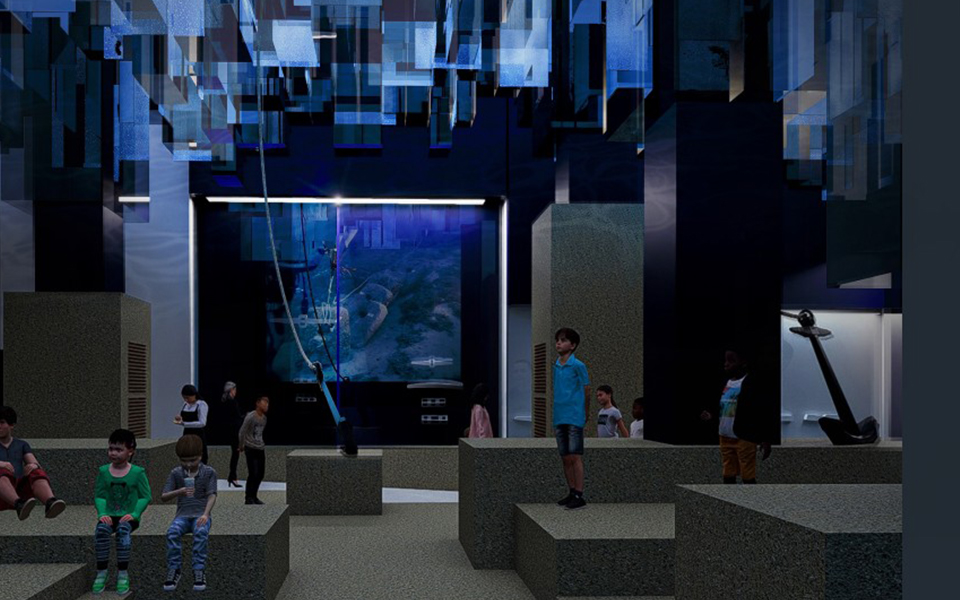
A photorealistic depiction of sections of the exhibition.
© Hellenic Ministry of Culture
In contrast, “Fragmentary Approaches to the Past” introduces a sense of mystery, inviting visitors to consider the gaps and unanswered questions that often accompany underwater archaeological finds. This theme challenges viewers to engage their imaginations as they ponder what lies beyond the fragments we’ve uncovered, creating an open-ended dialogue between history and speculation.
As the narrative progresses, the museum shifts its focus outward to the broader community with “Underwater Cultural Heritage Open to Society.” Here, visitors are encouraged to engage directly with Greece’s maritime legacy, bridging the divide between scholarly research and public appreciation. This section highlights the importance of accessibility, ensuring that maritime heritage is preserved and celebrated for future generations.
The sixth and final chapter of the journey, “SILO and Piraeus: Intertwined Histories,” brings the story full circle by grounding it in the museum’s physical and cultural context. This theme explores the industrial heritage of the SILO building and its significance to the port city of Piraeus, tying the past and present together in a seamless narrative of transformation and resilience.
Through these interconnected narratives, the museum offers a multi-layered experience, ensuring that every visitor – whether a casual tourist or a dedicated historian – leaves with a deeper appreciation for Greece’s unparalleled maritime heritage.
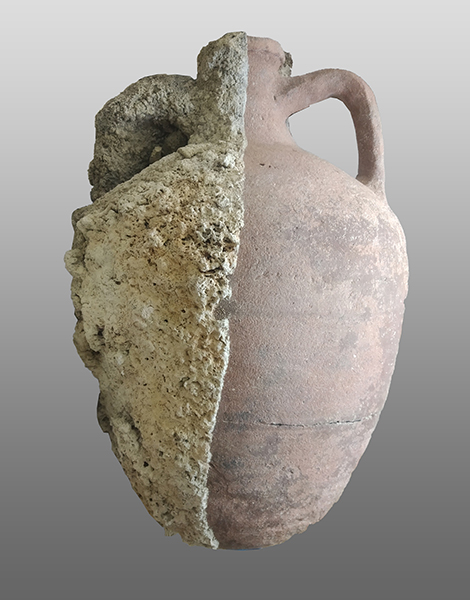
An ancient amphora undergoing conservation.
© Hellenic Ministry of Culture
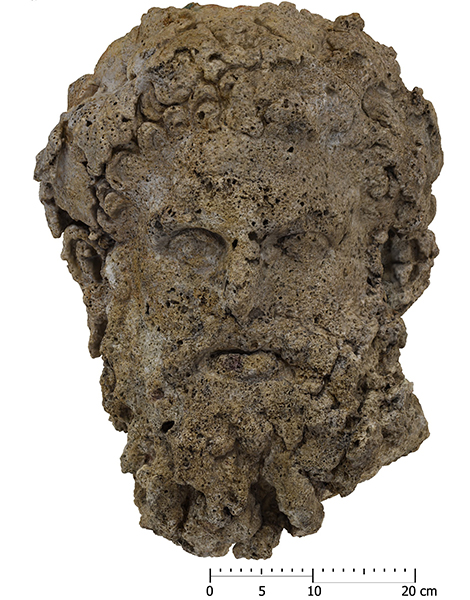
A marine-encrusted marble head of Hercules, recovered from the Antikythera shipwreck.
© Hellenic Ministry of Culture
The museum experience has been meticulously designed to engage, educate, and inspire. The historic SILO building will house the opening themes, where its industrial ambiance will evoke the raw energy of maritime trade and exploration. From there, visitors will transition into the modern extension, which will showcase the museum’s most extensive collections and cutting-edge interactive technologies.
Interactive features, including augmented reality applications and tactile displays, will bring artifacts to life, making history accessible and engaging for diverse audiences, from casual tourists to academic scholars. The conveyor belt at the museum’s conclusion ties the experience together, inviting visitors to reflect on how the past, present, and future of Greece’s maritime heritage remain intertwined.
Inclusivity is a cornerstone of the museum’s mission. Universal accessibility is built into the design, with features such as ramps, elevators, and spacious walkways ensuring that individuals with mobility challenges can navigate with ease. For visitors with visual impairments, tactile exhibits and audio guides will provide enriching alternatives. Informational materials will also cater to a range of learning levels, ensuring that the museum is truly welcoming to all.
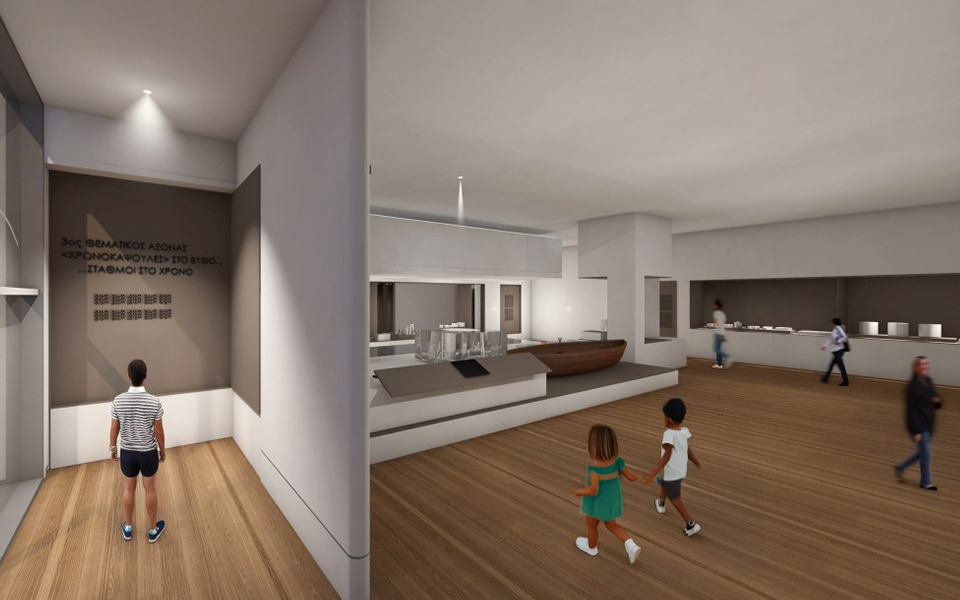
Photorealistic depiction of the 3rd thematic axis of the exhibition.
© Hellenic Ministry of Culture
As construction progresses, the National Museum of Underwater Antiquities is already being hailed as a transformative addition to Greece’s cultural landscape. Approved by the Ministry of Culture, work began in December 2023, with a meticulous focus on preserving the SILO building’s integrity while integrating contemporary architectural elements.
Minister Mendoni has expressed confidence that the museum will elevate Piraeus to the ranks of top international cultural destinations. Through its fusion of history, innovation, and accessibility, it promises an unforgettable experience for visitors from around the world.
By 2026, the National Museum of Underwater Antiquities will stand not only as a testament to Greece’s maritime legacy but as a symbol of its ongoing dedication to preserving the past for future generations. Visitors will leave with a renewed appreciation for the profound connection between Greece and the waters that have shaped its history, culture, and identity for millennia.
In Drapetsona and Keratsini, family-run kebab...
Whether you’ve just stepped off a...
Lost to earthquakes, swallowed by the...
Explore the tavernas of Nikaia, Moschato,...